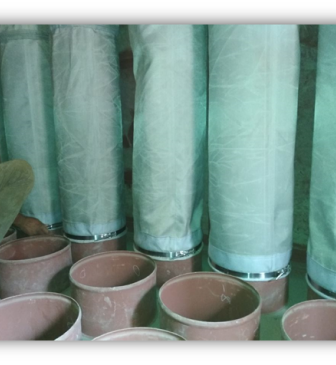Cement
The cement industry, due to the nature of its production process, generates substantial dust emissions as a byproduct. Recognizing the environmental impact of these emissions, cement manufacturers have undertaken significant efforts to mitigate dust pollution and adopt more sustainable practices. These initiatives reflect a growing commitment to reducing air pollution and its associated health and environmental consequences. By developing and implementing innovative approaches and technologies, the cement industry is not only aiming to improve its environmental footprint but also striving to play a crucial role in the global efforts to address air quality issues and create a cleaner and healthier future.
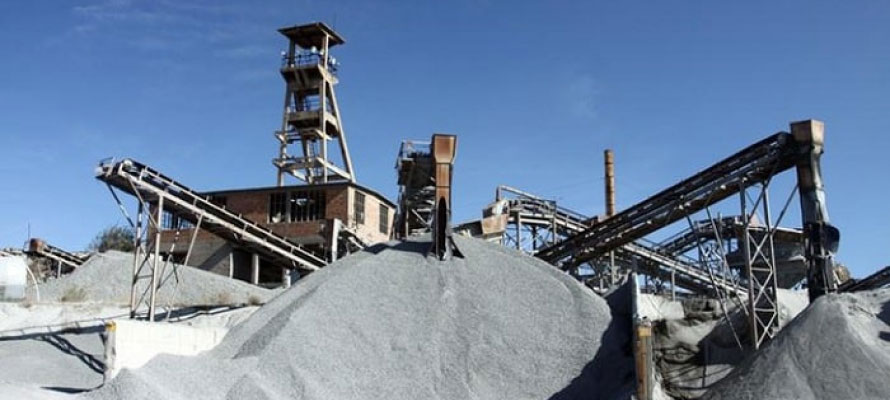
Pollution in Cement Manufacturing
Pollution in cement manufacturing arises primarily from the
release of airborne contaminants during the production process. These contaminants
include particulates derived from both raw and finished materials, as well as
by-products of fuel combustion.
The conventional approach for managing emissions from sources aside from the kiln
often involves capturing the dust through hoods or partial enclosures and conveying
it through a network of ducts to specialized collectors.
To effectively
combat this pollution, the cement industry needs a range of dust collectors tailored
to specific factors such as particle size, dust loading, flow rate, moisture
content, and gas temperature. This need for versatile and customized dust control
solutions highlights the industry's commitment to reducing its environmental impact
and adopting cleaner manufacturing practices.
The need for better technology
The cement industry is facing an increasingly complex landscape
where the demand for efficient dust collection and environmental compliance has
never been higher. To address these challenges, the industry recognizes the pressing
need for better and more advanced technologies.
Modern cement
manufacturing facilities are now integrating state-of-the-art emissions control
technology with extensive application expertise to fulfill stringent EPA emission
standards. Ensuring all processes run smoothly, maintaining high-quality product
output within set timelines, and simultaneously adhering to environmental
regulations have become formidable tasks. Specialized fabric filter will help
controlling the aftereffects. As the cement sector evolves, the adoption of superior
technology becomes not just a choice but a necessity to enhance operational
efficiency, environmental sustainability, and overall competitiveness in an industry
that plays a pivotal role in global construction and infrastructure development.
Thermal Power
The thermal power plant industry serves as the vital backbone of a nation, fueling economic
growth and providing the energy essential for its development.
However, the generation
of power from coal-fired and coal co-fired power plants has caused a lot of environmental
challenges. These facilities produced a variety of pollutants, some of which are
technology-specific, raising concerns about their impact on the environment and human health.
Consequently, the industry is increasingly focusing on innovation and cleaner
technologies to mitigate these challenges, aiming to strike a balance between energy generation
and environmental responsibility, ensuring a sustainable and cleaner energy future.
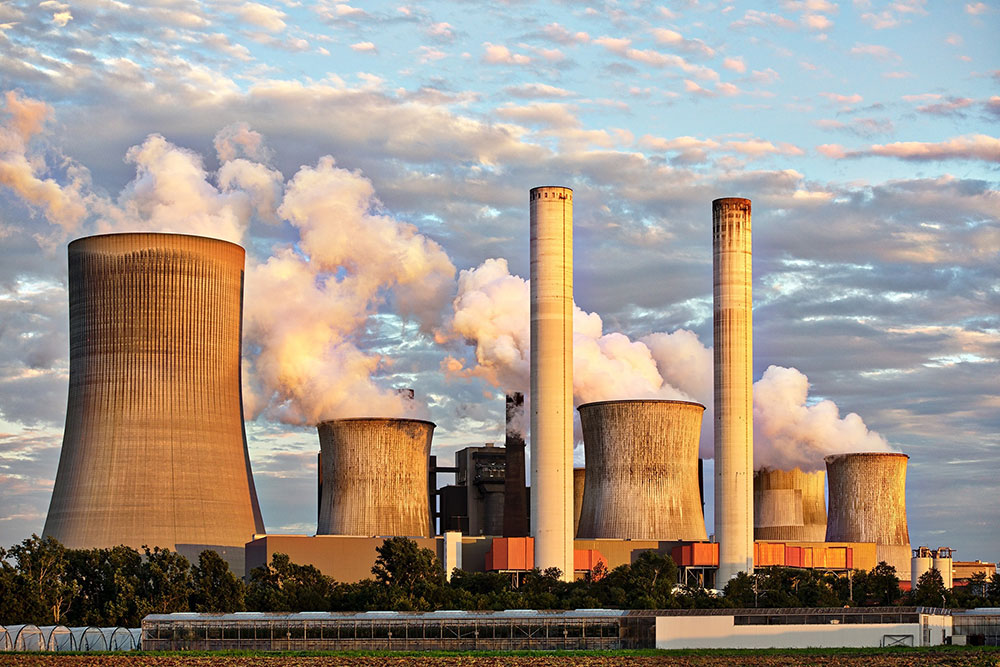
Pollution in Thermal Power Plants
Pollution in the thermal power plants industry is a significant
concern, primarily emanating from the combustion of fossil fuels and biomass.
The emissions to the air include a range of pollutants, such as sulfur
dioxide (SO2), nitrogen oxides (NOX), particulate matter (PM), carbon monoxide (CO),
and greenhouse gases like carbon dioxide (CO2). Depending on the type and quality of
the fuel used, additional substances like heavy metals (mercury, arsenic, etc.),
halide compounds, unburned hydrocarbons, and volatile organic compounds (VOCs) may
also be released in smaller quantities, posing environmental and health risks due to
their toxicity and persistence. Sulfur dioxide and nitrogen oxides can contribute to
long-range and trans-boundary acid deposition.
The quantity and nature of
these air emissions vary based on factors such as the fuel type, combustion unit
design, operational practices, emission control measures, and system efficiency. For
instance, natural gas-fired plants generally produce fewer particulate matter and
sulfur oxides compared to coal-fired plants, and they release lower levels of carbon
dioxide, thus presenting a more environmentally favorable option for power
generation.
Efforts to reduce and control these emissions are critical to
minimizing the environmental impact of the thermal power plants industry.
The need for better technology
The thermal power plant industry plays a pivotal role in a
nation's energy infrastructure, but it also faces a pressing challenge in minimizing
air pollution. To achieve this, there is a growing need for the integration of
advanced technology and innovation.
While several measures can be adopted
to reduce air pollution in power plants, including the choice of fuel and techniques
to enhance energy conversion efficiency, the adoption of cleaner and more efficient
technologies holds the key. The optimization of energy utilization efficiency
depends on numerous factors, from fuel type and combustion system to turbine
operating conditions and cooling systems. Better technology like industrial
filtration plant can aid significantly to improve energy generation processes and
reduce emissions of various air pollutants, including the critical reduction of
carbon dioxide(CO2) per unit of energy produced. The use of a filtration bag can
help in this quest of controlling emission.
As the industry evolves,
embracing advanced technology is imperative to strike a balance between power
generation and environmental responsibility, thus contributing to a sustainable and
cleaner energy future.
Metal Smelters
The metal smelting industry, a cornerstone of modern manufacturing and infrastructure
development, plays a vital role in transforming raw ores into valuable metals that are essential
for a wide range of applications. Through the intricate processes of heating, melting, and
separating metals from their ores, metal smelting plants produce materials crucial to
construction, transportation, and various industrial sectors.
However, the industry
also faces significant environmental challenges, as these processes can generate emissions of
harmful pollutants, impacting air quality and public health. Efforts are increasingly focused on
adopting cleaner technologies and sustainable practices to balance the industry's vital role in
global progress with the need for responsible and eco-friendly production methods.
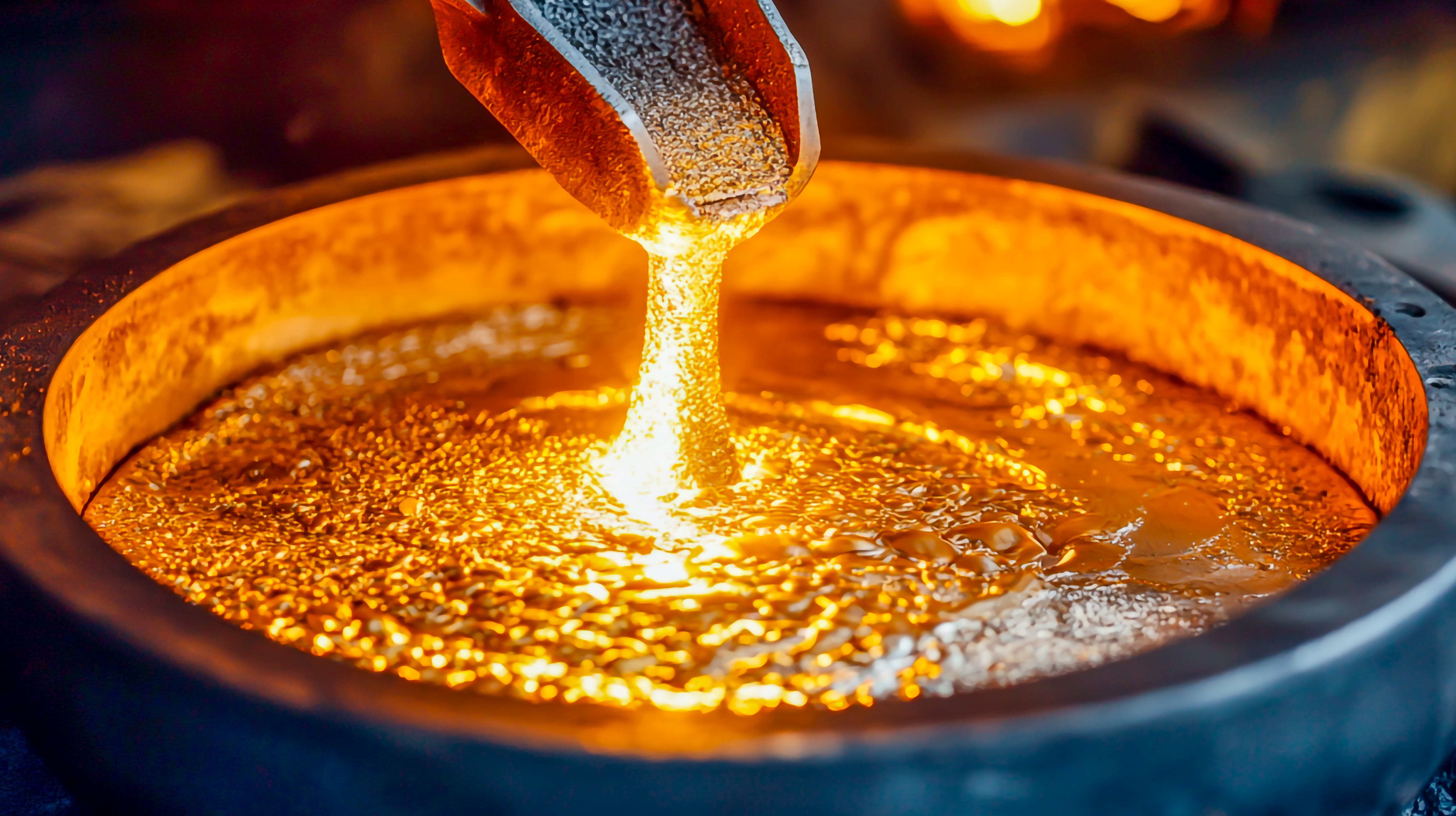
Pollution in Metal Smelter
The metal smelters industry is associated with various pollution
challenges stemming from the extraction and processing of ores to obtain valuable
metals.
Emissions of particulate matter, heavy metals, and hazardous gases
can have serious environmental and health implications. The combustion of fossil
fuels, high-temperature processes, and the release of noxious byproducts like sulfur
dioxide and volatile organic compounds contribute to air pollution concerns.
Additionally, water pollution can result from the runoff of toxic chemicals
and heavy metals into water bodies, potentially affecting aquatic ecosystems. To
address these issues, the industry is continually striving to develop and implement
clean technologies and stringent environmental controls, reducing its environmental
footprint and ensuring a more sustainable and responsible approach to metal
production.
The need for better technology
The metal smelters industry faces a compelling need for advanced
technology to effectively control and mitigate the pollution it generates. Metal
smelting processes often produce emissions laden with harmful pollutants, including
heavy metals, particulate matter, and toxic gases.
To safeguard both the
environment and public health, the industry must embrace innovative pollution
control technologies that are capable of capturing and reducing these hazardous
emissions. These technologies like industrial filter bags will not only help in
reducing air and water pollution but also promote resource efficiency by enabling
the recovery of valuable materials from waste streams. The bag filter fabric plays a
vital role in collecting the pollutants and reducepollution.
As
environmental regulations continue to evolve and societal expectations for cleaner,
more sustainable industrial practices rise, the integration of
state-of-the-artpollution control measures is not just a necessity but also a
testament to the industry's commitment to responsible and eco-friendly metal
production.
Aluminum Manufacturing
The Aluminum Manufacturing industry operates under stringent regulations, particularly concerning
particulate emissions control. The production of aluminum involves the handling of fine and
abrasive alumina dust, necessitating the use of cutting-edge filter media and advanced
technology to maintain air quality standards.
Significant investments are made in
baghouse maintenance and the deployment of monitoring equipment to ensure effective filtration.
In the primary aluminum sector, pneumatic products play a vital role, especially in the pot
room, where they contribute to the industry's process control. Beyond the pot room, the aluminum
industry relies on solutions provided by companies like Rexroth throughout its various process
levels, ensuring the smooth operation of this crucial sector.
Customized industry
concepts are designed to meet specific application requirements, underscoring the industry's
commitment to efficiency and compliance with environmental standards.
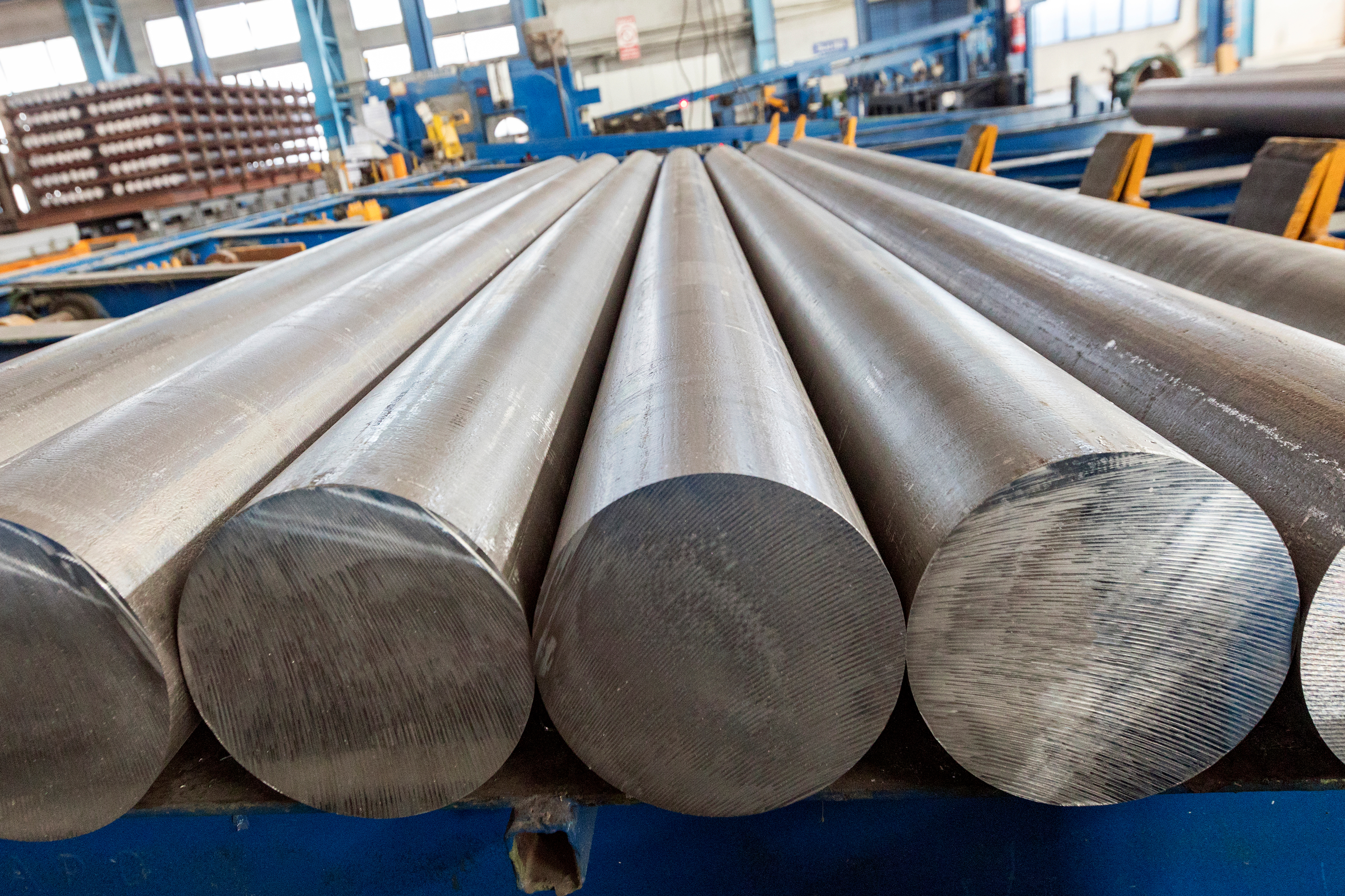
Pollution in Aluminum Manufacturing
Pollution in the aluminum manufacturing industry is a significant
environmental concern. The production of aluminum involves various emissions and
waste byproducts that can have detrimental effects on air and water quality.
Particulatematter, greenhouse gases, and toxic chemicals are released
during the aluminum smelting and refining processes, contributing to air pollution
and climate change. Additionally, the disposal of red mud, a residue from alumina
refining, poses a risk of soil and water contamination. The industry is working
diligently to implement cleaner and more efficient technologies, such as advanced
filtration systems and emission control measures, to minimize its environmental
footprint.
As environmental regulations become more stringent and public
awareness of pollution issues grows, the aluminum manufacturing sector is
increasingly focused on adopting sustainable and responsible practices to reduce its
impact on the environment.
The need for better technology
The aluminum manufacturing industry urgently requires the
integration of advanced technology to effectively control and mitigate pollution. As
a sector that has historically generated emissions and waste byproducts, it faces
the pressing need to adopt cleaner and more efficient technologies.
Innovative pollution control measures, such as state-of-the-art filtration
systems and cutting-edge emission control technologies, can significantly reduce the
environmental impact of the industry. By investing in better technology, the
aluminum manufacturing sector can minimize the release of harmful particulate
matter, greenhouse gases, and toxic chemicals that contribute to air and water
pollution.
This shift towards more sustainable and eco-friendly production
practices and industrial filters is not only essential for regulatory compliance but
also underscores the industry's commitment to environmental responsibility and
public health.
Solutions for the Aluminum industry
Masturlal Fabrichem stands as a trusted supplier in the aluminum
manufacturing industry, offering a wide range of baghouses tailored to specific
needs, from small-scale to large units.
Its expertise has proven invaluable
in addressing common challenges encountered in the industry. These include problems
like opacity, chemical attack, filter abrasion, high differential pressures, thermal
degradation, and insufficient cloth area. By providing effective filtration
solutions, it has played a vital role in reducing emissions, maintaining filter
integrity, and enhancing operational efficiency for aluminum manufacturers.
Masturlal Fabrichem's dedication to problem-solving shows their credibility and
commitment to supporting the industry's quest for cleaner and more sustainable
production practices.
Copper
The copper manufacturing industry holds a pivotal role in the global economy, producing a
versatile and widely-used metal with applications ranging from electrical wiring and plumbing to
electronics and construction.
The process of copper manufacturing involves a series of
intricate steps, including mining, refining, smelting, and casting, which transform raw copper
ores into high-quality products. However, this industry also faces challenges, such as
environmental concerns related to the emissions of pollutants and the management of waste
materials.

Pollution in Copper Manufacturing
Pollution in the copper manufacturing industry is a significant
environmental issue. Throughout the copper production process, various pollutants
and waste materials are generated, posing risks to both air and water quality.
Emissions of sulfur dioxide (SO2) and other harmful gases can result from
the smelting and refining of copper, contributing to air pollution and acid rain.
Additionally, the disposal of mine tailings, which often contain heavy metals and
toxic chemicals, raises concerns about soil and water contamination.
The need for better technology
The copper manufacturing industry faces an urgent imperative to
embrace advanced technology for the effective control and mitigation of pollution.
The processes involved in copper production can lead to the release of
harmful pollutants, such as sulfur dioxide, heavy metals, and toxic chemicals, which
have a detrimental impact on the environment and public health. The use of
industrial filtration products can bring about the desired change in controlling
pollutants.
Solutions for Copper Manufacturing
The industry recognizes the need for stringent environmental
controls and the adoption of clean technologies to mitigate these impacts. In
response to growing environmental regulations and public awareness, copper
manufacturers are actively working to minimize their environmental footprint and
promote sustainable and eco-friendly practices, ensuring responsible copper
production.
Below is a list of common problems in which Masturlal Fabrichem
has supplied filtration expertise to solve problems:•
High differential pressure
Acid/Chemical attack
Temperature excursions
Opacity
Hopper evacuation problems
Zinc Manufacturing
The zinc manufacturing industry is characterized by its unique set of challenges, particularly in
the areas of smelting and product recovery. These challenges stem from the chemical composition
of the gas stream, temperature fluctuations, and the distinct characteristics of particles and
dust cake.
Achieving both environmental control and process control is of paramount
importance in this sector, prompting substantial capital investment to attain the best possible
outcomes. The industry recognizes the significance of striking a balance between operational
efficiency and environmental responsibility.
Consequently, it places a strong emphasis
on adopting advanced technologies and comprehensive solutions to address these complex
challenges, ultimately working towards more sustainable and eco-friendly zinc production
practices.
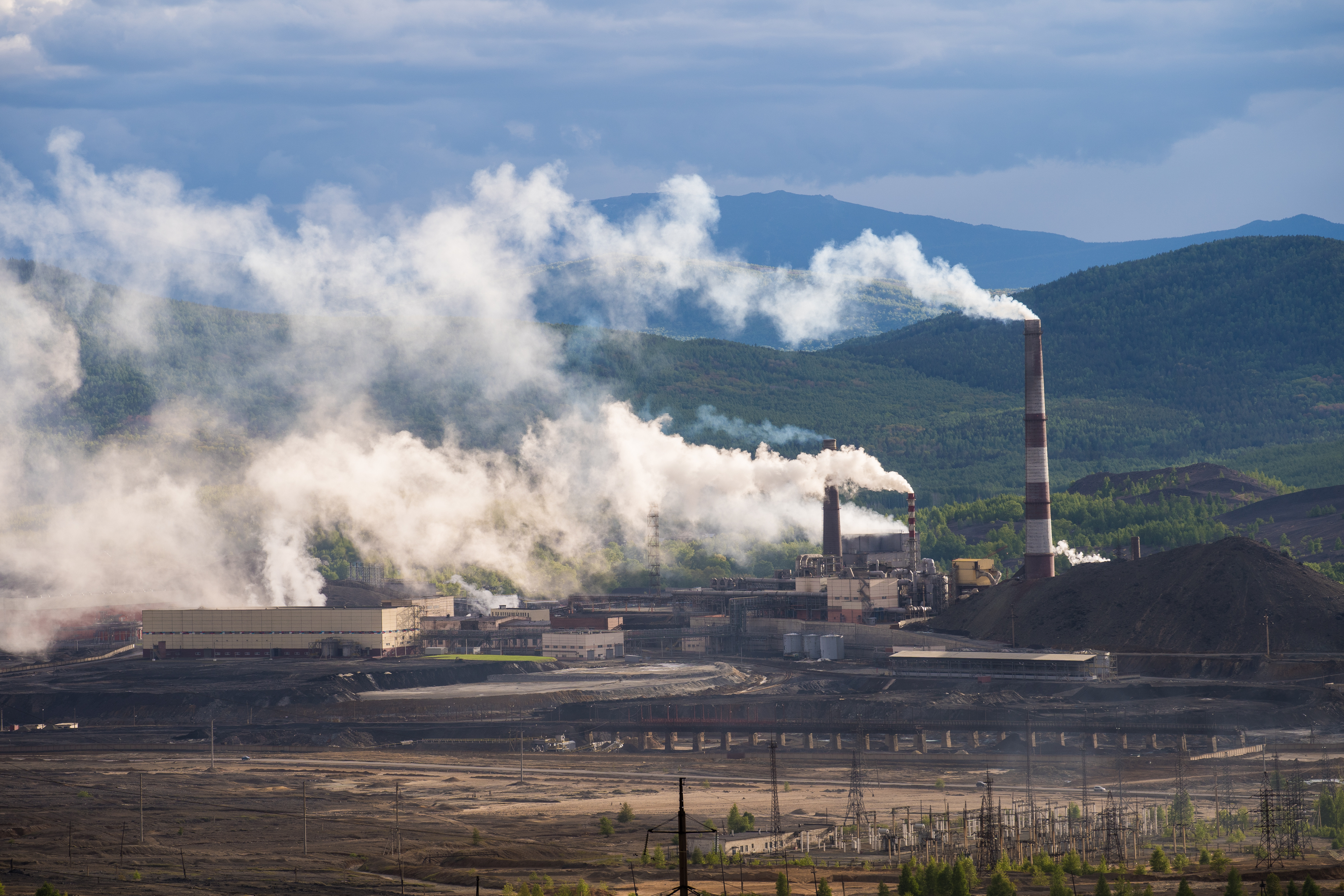
Pollution in Zinc Manufacturing
Pollution in the zinc manufacturing industry is a significant
concern due to the complex and chemically intense processes involved in zinc
production.
Emissions of particulate matter, heavy metals, and hazardous
gases are common byproducts, posing environmental and public health risks. These
emissions can lead to air pollution and soil contamination, and the disposal of
waste materials, such as zinc ash and slag, requires careful management to prevent
further environmental harm.
The need for better technology
Zinc production processes, often involving high-temperature
operations, result in emissions of particulate matter and other pollutants, posing
risks to both air and water quality. To mitigate these challenges and meet stringent
environmental regulations, the industry must embrace cleaner and more efficient
technologies.
State-of-the-art industrial filtration products, emission
control measures, and waste management practices are critical to reducing the
industry's environmental footprint. Better technology not only ensures regulatory
compliance but also underscores the industry's commitment to responsible and
sustainable zinc production.
Solutions for Zinc industry
Masturlal Fabrichem has crafted solutions to tackle the problems
of the Zinc industry. Below is a list of common problems in which we have supplied
filtration expertise to solve problems:
Poor dust cake release
Opacity
Temperature excursions
Insufficient cloth area
Premature bag failure
Hopper evacuation
Spark holes
Lead Manufacturing
The lead manufacturing industry holds a significant role in various sectors, providing essential
products such as batteries, ammunition, and various metal alloys. However, it faces unique
challenges due to the toxicity of lead and the associated environmental and health risks.
The production of lead involves complex processes, including mining, smelting, and
refining, which can result in emissions of lead dust and other pollutants. Controlling lead
pollution is a critical focus for the industry, with the adoption of advanced technologies and
stringent environmental regulations being essential to ensure responsible lead production.
As environmental awareness and safety standards continue to evolve, the lead
manufacturing sector is committed to minimizing its environmental footprint and safeguarding
public health while contributing to various industrial and technological applications.

Pollution in Lead Manufacturing
Lead pollution poses substantial risks, particularly in terms of
soil and water contamination, and is known to contribute to a range of health
issues, especially in communities surrounding lead manufacturing facilities.
To address these challenges, the industry must adopt advanced pollution
control measures and cleaner technologies to minimize emissions and mitigate its
environmental impact. Regulatory compliance and public health considerations are
driving the industry to adopt more sustainable and eco-friendly practices, with a
strong focus on reducing lead pollution and its associated risks.
Solutions for Lead industry
Masturlal Fabrichem has provided highly engineered products to
tackle the problems of the Lead industry. Below is a list of common problems in
which we have supplied filtration expertise to solve problems:
High differential pressure
Opacity
Insufficient cloth area
Hopper discharge
Temperature excursions
Ferro Alloys Manufacturing
The Ferro Alloys Manufacturing Industry is a crucial segment of the metallurgical sector,
specializing in the production of alloying agents that enhance the properties of steel and other
metals.
Ferroalloys, such as ferrochrome, ferromanganese, and ferrosilicon, play a
pivotal role in modifying the characteristics of base metals, making them suitable for diverse
applications across industries, including automotive, construction, and infrastructure
development. The industry operates through a complex set of processes, involving the smelting of
raw materials and alloying elements at high temperatures. While it significantly contributes to
the global metals and steel market, it also grapples with challenges related to energy
consumption and environmental impact.
To address these concerns, there's a growing
emphasis on cleaner technologies and sustainable practices in the Ferro Alloys Manufacturing
Industry, ensuring not only the production of high-quality alloys but also environmental
responsibility and resource efficiency.
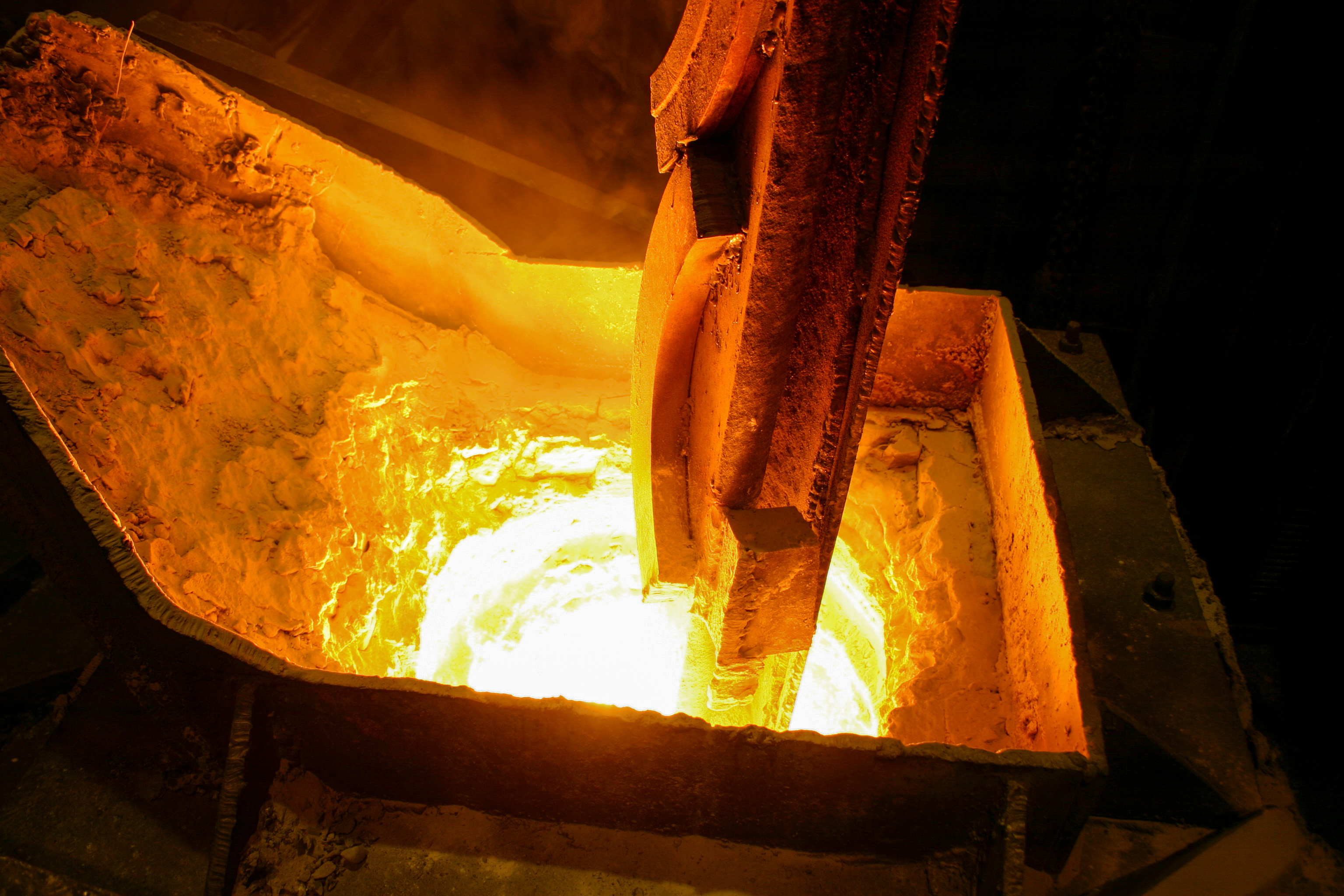
Pollution in Ferro Alloys Manufacturing
Pollution in the Ferro Alloys Manufacturing Industry is a pressing
environmental issue, primarily due to the high-temperature processes involved in
smelting and alloy production. These processes release emissions of particulate
matter, heavy metals, and other pollutants that can have detrimental effects on air
and water quality.
Additionally, the industry produces substantial amounts
of slag and waste materials, which require careful disposal and management to
prevent soil and water contamination. To address these environmental concerns, the
industry is increasingly focused on adopting cleaner and more efficient
technologies, such as advanced emission control systems and improved waste
management practices.
Regulatory compliance and heightened environmental
awareness are driving the Ferro Alloys Manufacturing Industry towards more
sustainable and responsible practices to minimize its environmental footprint while
continuing to provide essential alloying agents to various industrial sectors.
Solutions for Ferro Alloys Manufacturing
To address these concerns, Masturlal Fabrichem has manufactured
the following filtration solutions:
Temperature excursions
Dilution air dampers
Hopper evacuation
Hood capturing inefficiencies
High differential (start-up)
Increased smoke volume
Iron and Steel
The "key" to India's development, the iron and steel sector has been at the forefront when it
comes to the Industrial Revolution. Iron and steel industries have developed to aid the
fast-growing economy.
The growth and expansion of the nation's iron and steel
industries will have an impact on a variety of other sectors, including agriculture, the
consumer goods industry, transportation and communication infrastructure, the manufacturing of
tools and machines, the production of electrical machinery, etc.

Pollution in Iron and Steel Industry
Emissions of particulate matter, greenhouse gases, and other
pollutants result from the high-temperature smelting and refining operations,
contributing to air pollution and climate change.
Moreover, the disposal of
waste materials, such as slag and steel mill scale, raises concerns about soil and
water contamination. The industry recognizes the need to adopt cleaner technologies
and comprehensive waste management practices to mitigate these environmental
impacts.
Solutions for Iron and Steel Industry
Below is a list of common problems in which we have supplied
filtration expertise to solve problems:
Ore beneficiation
Pig iron production
Oxygen steel making
Rolling mill
Cogeneration
Electric arc furnace
Infrastructure
Infrastructure forms the basis upon which industries develop. It is the foundation that leads to further progress. The industry works with other major providers that facilitate the functioning of many day-to-day products and functions.

Pollution in Infrastructure
Pollution in the infrastructure industry, particularly in asphalt
manufacturing, is a notable concern due to the emissions associated with the
production process. The manufacturing of asphalt involves the heating of aggregates
and bitumen, resulting in the release of particulate matter, dust, and potentially
hazardous pollutants.
To address these environmental challenges, the
industry deploys various pollution control measures, such as cyclone separators,
baghouses, and wet scrubbers, which help to capture and reduce particulate
emissions. These technologies are vital in mitigating the impact of asphalt
manufacturing on air quality and environmental health.
As environmental
regulations continue to evolve, the infrastructure industry is increasingly focused
on adopting cleaner and more sustainable practices to reduce its environmental
footprint and ensure responsible and eco-friendly infrastructure development.
Oil & Gas
The Oil and Gas industry encompasses the exploration, extraction, refining, and distribution of
oil and natural gas, playing a critical role in fueling economies, transportation, and various
industrial processes. However, it also faces complex challenges related to environmental impact,
resource sustainability, and climate change due to carbon emissions. Striking a balance between
meeting the world's energy needs and adopting cleaner and more sustainable practices has become
a paramount focus. It is a great home ground for filter and industrial development.
The
oil and gas sector is actively exploring innovative technologies such as carbon capture and
renewable energy integration while embracing best practices in reducing environmental impact.
This commitment to both energy provision and environmental responsibility underscores the
industry's role in shaping a more sustainable and resilient energy future.
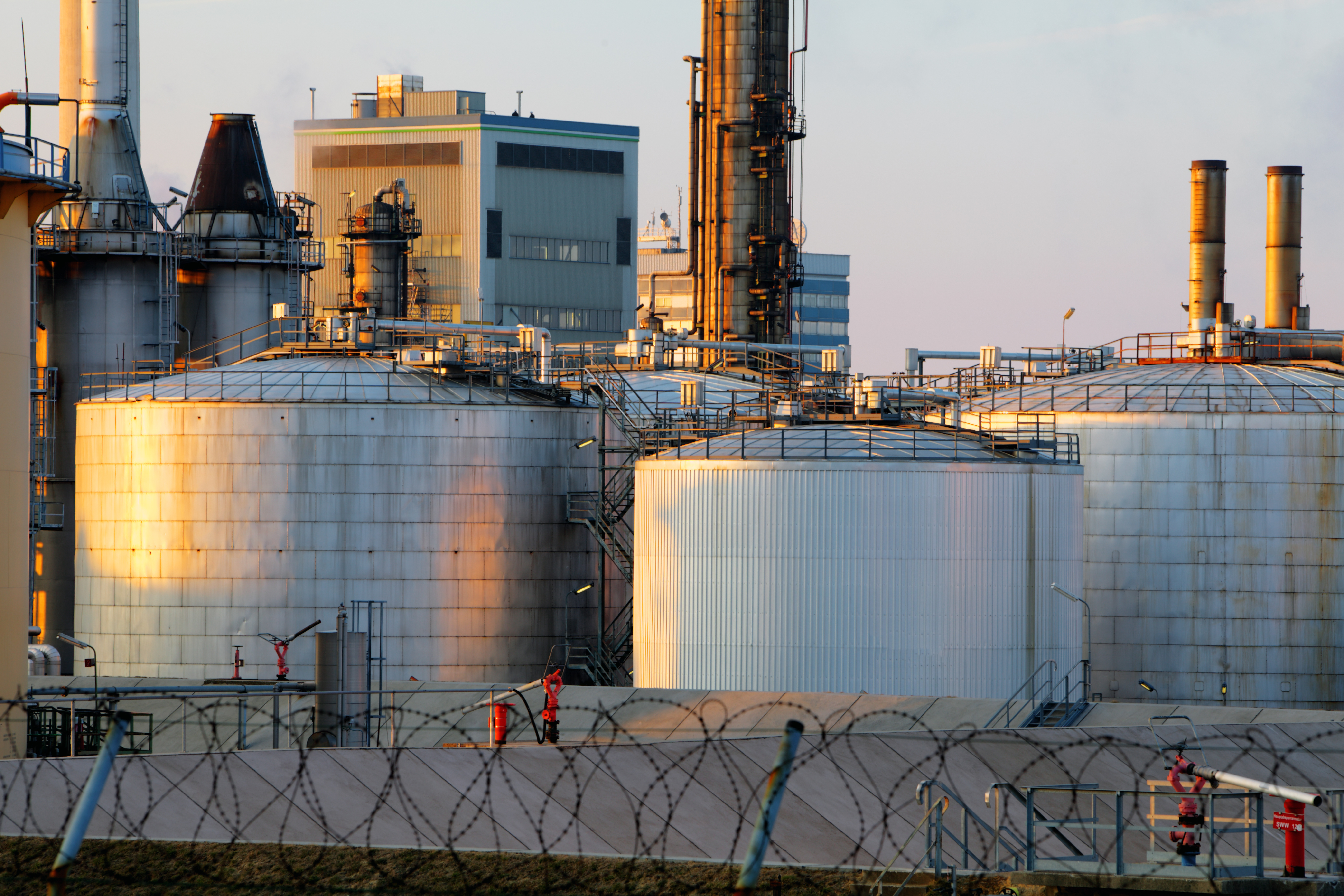
Pollution in Oil and Gas Industry
Pollution in the oil and gas industry is a multifaceted concern,
particularly in both upstream and downstream applications. Upstream applications
encompass critical processes such as water injection filtration, crude oil
filtration, and diesel filtration, where the need for effective filtration is
paramount to prevent contaminants from affecting the quality of these resources.
Meanwhile, in the downstream sector, pollution control becomes equally
essential for applications like gas turbine air filtration and oil filtration. The
refining of oil and gas, which relies on intricate processes with stringent
filtration requirements, involves the removal of solids, deformable substances, and
liquid contaminants from field gas before undergoing gas separation procedures.
This necessitates the deployment of advanced filtration technologies,
including multi-stage separators, coalesces, and particulate filter bags, to ensure
the efficient and clean operation of these processes, minimizing the environmental
impact of the oil and gas industry.
The need for better technology
While Oil and Gas Industry are big contributors to the development
of the economy, they are also major contributors to pollution. The mission to
progress while taking care of the environment around can be achieved by the combined
effort of the Oil and gas Industry and filter manufacturing company like Masturlal
Fabrichem.
Technological advancements can help in about a change in the way
the industry contributes to pollution. Simple steps like adding a layer of
filtration in the production process can help being about a better tomorrow.
Solutions for Oil and Gas Industry
Masturlal Fabrichem provides vital solutions to address the
ever-growing demands on the oil and gas industry. With the global need for these
resources increasing exponentially, the industry requires cutting-edge technologies
to ensure top production levels while minimizing environmental impact.
It
offers a comprehensive range of solutions, including continuous emission monitoring,
particulate-opacity monitoring, combustion control, process analysis and control,
cross-stack gas analysis, and portable gas equipment.
These solutions
enable the oil and gas sector to enhance its operational efficiency, maintain
regulatory compliance, and effectively manage emissions, contributing to sustainable
and responsible production practices in this crucial industry.
Waste Incineration
Waste incineration facilities are designed to combust and reduce the volume of various waste
materials, producing heat and electricity as byproducts. This not only helps in reducing the
landfill burden but also harnesses the potential energy stored in waste.
However, the
industry faces challenges related to emissions, air quality, and the safe disposal of ash
residues. To address these issues, waste incineration plants employ advanced technologies for
emission control and pollution abatement. The industry is constantly evolving to strike a
balance between waste reduction, energy production, and minimizing its environmental footprint,
making it an essential component of modern waste management practices.
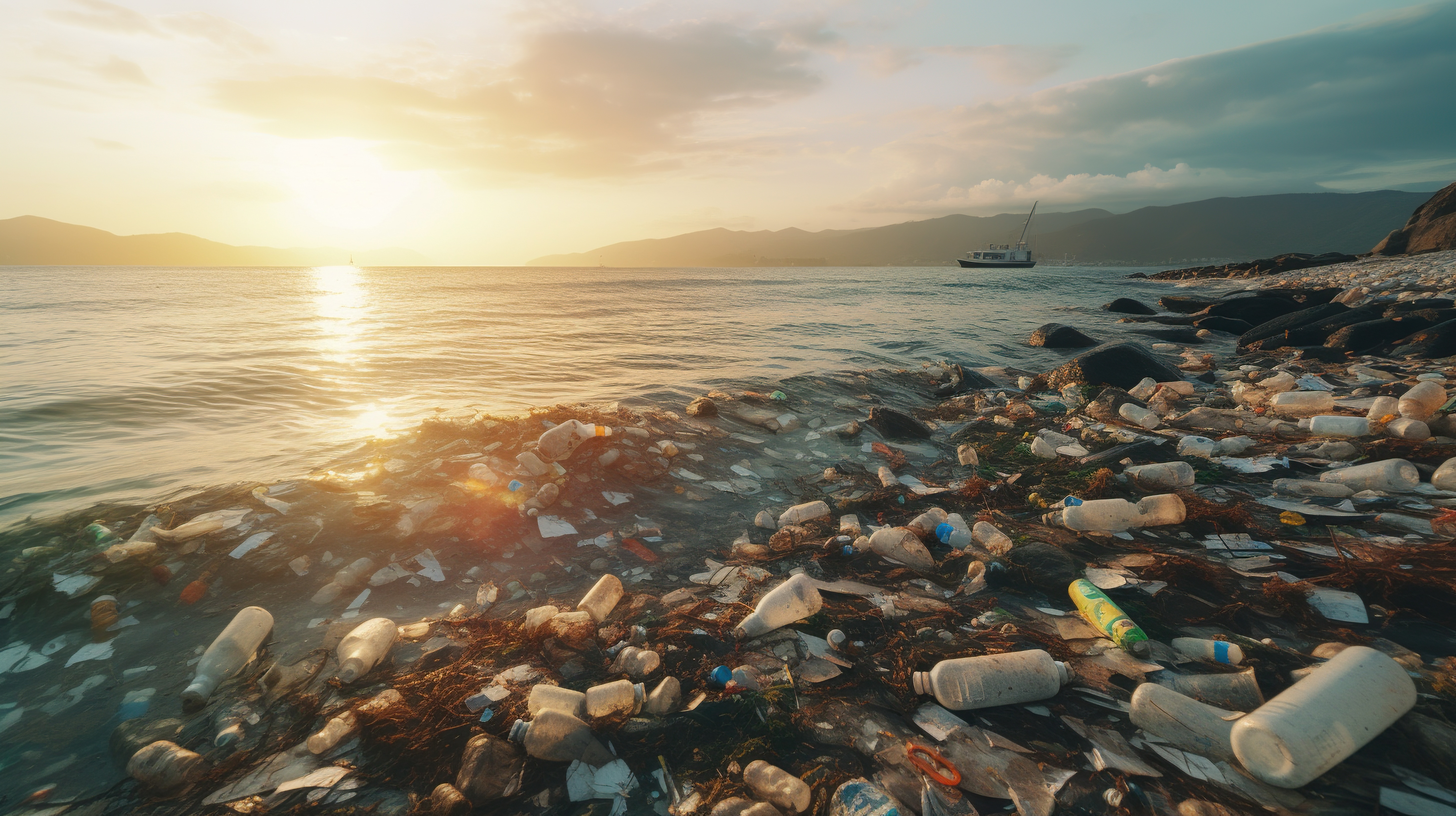
Pollution in Waste Incineration Industry
Pollution in the waste incineration industry is a significant
concern, primarily due to the emissions generated during the combustion process. The
combustion of any substance results in the release of byproduct emissions into the
air.
In waste incineration facilities, several key air emissions pose
significant environmental and health concerns. These include metals like mercury,
lead, and cadmium, as well as organics such as dioxins and furans, which are highly
toxic compounds. Additionally, acid gases like sulfur dioxide and hydrogen chloride,
along with particulate matter like dust and grit, are released, further contributing
to air pollution.
Other emissions, such as nitrogen oxides and carbon
monoxide, also have adverse environmental and health effects. To mitigate these
challenges, the waste incineration industry employs advanced pollution control
technologies to minimize emissions and reduce its environmental impact, ensuring
responsible waste management practices.
The need for better technology
The waste incineration industry urgently requires advancements in
technology to address the multifaceted environmental and health challenges it poses.
The exposure of individuals to incineration emissions, whether through inhalation,
ingestion, or skin contact, underscores the critical need for improved technology in
the sector.
Numerous studies suggest that ingestion and skin contact may
pose more substantial risks than inhalation, emphasizing the urgency of mitigating
these risks through technological innovations. Furthermore, the impact of emissions
extends beyond human health, affecting plants and animals in the vicinity of
incineration facilities. The concentration of contaminants in emissions, the
effectiveness of environmental controls, stack height, facility location, and
prevailing weather conditions all play a role in determining the extent of
environmental impact. To mitigate these challenges, it is crucial to employ advanced
technology and comprehensive pollution control measures like encouragement of filter
bag manufacturing and use of it in waste incineration.
The choice of siting
incineration facilities in isolated industrial areas becomes pivotal in minimizing
contamination levels and safeguarding the environment.
Solutions for Waste Incineration Industry
Masturlal Fabrichem provides essential solutions for the waste
incineration industry, particularly in the realm of air emission control. In this
context, fabric filters, also referred to as baghouses, emerge as a highly effective
technology for mitigating emissions of metals and organic compounds that tend to
adhere to fine particulates. These fabric filters are constructed using numerous
cylindrical bags, which are adept at efficiently filtering emissions. Given that
waste incineration facilities are often situated in densely populated areas, they
undergo rigorous environmental scrutiny, with vigilant neighbors closely monitoring
the efficacy of the filtration and scrubbing processes. It offers vital support in
ensuring compliance and environmental responsibility in waste incineration, thus
contributing to cleaner air and a safer environment for nearby communities.
Masturlal Fabrichem a recognized supplier in baghouse and dust collector
filters, installation, parts and services, has proven products and services that can
handle the common and site-specific problems such as:
Premature baghouse filter failures
High pressure drop or drag resistance
Emissions
Hopper or silo bridging & buildup
Heavy corrosion of baghouse floors& walls
Reverse air/pulse jet systems
Corroded cages
Biomass (Sugar/Molasses) Manufacturing
Biomass manufacturing in the context of sugar and molasses production represents a pivotal
component of the renewable energy and agribusiness sectors. It involves the conversion of
organic materials, primarily sugarcane, into various valuable products, including sugar,
molasses, and biofuels.
It is often utilized to generate bioenergy, such as electricity
and biofuels, contributing to sustainable energy production and reducing the environmental
impact of sugar and molasses manufacturing processes. This synergy between agriculture and
renewable energy production underscores the industry's commitment to sustainability and its role
in the transition to cleaner and more eco-friendly energy sources.

Pollution in Sugar Manufacturing
The sugar manufacturing industry, with its increasing focus on
renewable and sustainable energy, has ventured into biomass-based production to meet
the world's growing demand for cleaner energy sources. The transition to alternative
energy sources has led to the development of proven air emission control systems to
mitigate environmental impact. In the context of biomass plants used for energy
production, the primary air pollutant of concern is fly ash, mainly composed of fine
particulates.
These biomass facilities are strategically placed in regions
with heightened environmental scrutiny, often in densely populated areas. With
vigilant neighbors closely monitoring the efficacy of filtration and scrubbing
processes, the industry has a vested interest in implementing robust pollution
control measures to ensure compliance and minimize its environmental footprint while
contributing to the production of sustainable energy.
The need for better technology
The sugar manufacturing industry, particularly in its endeavor to
harness biomass for energy production, faces a pressing need for advanced technology
to address the significant air pollution challenges associated with burning organic
materials. Biomass combustion, while a renewable energy source, releases substantial
amounts of pollutants into the atmosphere, akin to the emissions from burning solid
fuels like coal.
These emissions encompass various hazardous air pollutants
(HAPs), including particulate matter, nitrogen oxides, carbon monoxide, sulfur
dioxide, lead, mercury, and other noxious substances. HAPs are a group of 187 toxic
compounds recognized by the EPA for their potential to cause severe health effects,
such as cancer or reproductive issues, and adverse environmental impacts.
Notably, the burning of biomass prominently yields organic HAPs like styrene,
acrolein, and formaldehyde, as well as acid gases like hydrofluoric acid and
hydrochloric acid. To effectively manage and mitigate these emissions, the sugar
manufacturing industry necessitates the adoption of innovative technology, as
initiated by industrial filter manufacturing, and stringent pollution control
measures, aligning with its commitment to sustainability and responsible energy
production.
Solutions for the Sugar Manufacturing
Fabric filters or baghouses are generally considered the most
effective means of emissions control for filterable particulates. They can show
control efficiencies upward of 99%. They are installed at some mid-sized facilities
and many utility-scale facilities.
Masturlal Fabrichem, a major supplier of
bag house and dust collector filters, installation and parts and services, has
proven products and services that can handle the common and site-specific problems,
like:
Premature baghouse filter failures
High pressure drop or drag resistance
Emissions
Hopper or silo bridging & buildup
Heavy corrosion of baghouse floors& walls
Deteriorated shaker/reverse air systems
Corroded cages
Spent Wash
The spent wash industry plays a significant role in managing and reutilizing the waste generated
during the production of alcohol and related products. Spent wash, a product of distilleries and
alcohol manufacturing, consists of organic residues and pollutants. In the pursuit of
sustainable and eco-friendly practices, the spent wash industry focuses on the treatment and
beneficial utilization of this waste.
Advanced technologies are employed to process and
treat spent wash, converting it into valuable resources such as biogas and organic fertilizers,
while minimizing its environmental impact. The industry's efforts not only reduce waste disposal
issues but also contribute to cleaner energy production and sustainable agricultural practices,
aligning with the broader goals of environmental responsibility and resource conservation.
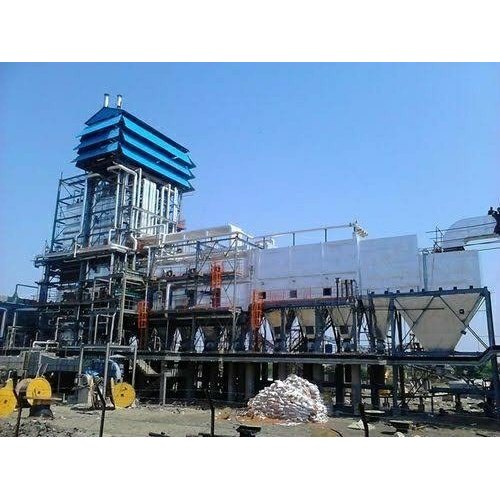
Pollution in Spent Wash Manufacturing
The spent wash manufacturing industry, primarily driven by alcohol
production from molasses in various regions of India, presents unique pollution
challenges. This industry relies on molasses as a key raw material, containing
approximately 7-8% glucose, which is subsequently transformed into alcohol through
the fermentation process.
The process initiates with the dilution of
molasses using water, adjusting the total dissolved solids to the desired
concentration. Yeast is introduced into the diluted molasses solution to initiate
the fermentation process. As this process unfolds, glucose is converted into ethyl
alcohol and carbon dioxide. While ethyl alcohol is a valuable product, the gaseous
carbon dioxide generated during fermentation poses pollution concerns.
This
emitted carbon dioxide, if not adequately controlled and managed, has the potential
to impact the environment, emphasizing the importance of effective pollution control
and management practices in the spent wash manufacturing industry.
The need for better technology
The spent wash manufacturing industry, particularly in the context
of alcohol production from molasses, stands in need of advanced technology and
innovative solutions to address its pollution challenges. The conventional processes
of dilution, fermentation, and carbon dioxide removal, while essential for alcohol
production, also result in the release of environmental pollutants.
To
minimize the industry's environmental footprint and adhere to stringent pollution
control regulations, there is a pressing need for enhanced technology and practices.
Advanced pollution control systems, more efficient fermentation methods, and
sustainable approaches for managing byproducts like carbon dioxide can significantly
reduce the industry's impact on the environment. By investing in filter
manufacturing and implementing these advanced technologies, the spent wash
manufacturing industry can contribute to cleaner and more sustainable production
processes while aligning with its environmental responsibilities.
Carbon Black
The carbon black industry, in its pursuit of greater efficiency, cost-effectiveness, and
compliance with stringent EPA regulations, places significant emphasis on its dust collection
equipment and bag houses. These crucial components play a pivotal role in the production
process, regardless of the specific carbon black grade being manufactured.
Notably,
technological advancements have revolutionized the industry over the years, enabling carbon
black facilities to achieve extended filter lifespans, heightened production rates, and reduced
equipment downtime. By embracing these innovations, the carbon black industry not only enhances
its operational efficiency but also strengthens its commitment to environmental responsibility
and sustainable production practices.

Pollution in Carbon Black Industry
The carbon black industry, while indispensable for various
applications such as tire manufacturing and plastics, is not without its pollution
challenges. The production process involves the combustion of hydrocarbons to create
carbon black particles, releasing emissions that include particulate matter,
volatile organic compounds (VOCs), and potentially hazardous air pollutants (HAPs).
These emissions, if not adequately controlled, can have adverse effects on
air quality and public health. To mitigate the environmental impact, carbon black
facilities invest in advanced pollution control technologies such as baghouses and
filtration systems, as well as adhere to stringent regulations and emission
standards.
By addressing these pollution concerns with the use of
industrial filters and embracing cleaner and more efficient production practices,
the carbon black industry aimsto strike a balance between its commercial
significance and environmental responsibility.
The need for better technology
The carbon black industry operates in a challenging environment,
balancing the growing global demand for its products with increasingly stringent
environmental and production standards. To meet these demands, the industry
recognizes the need for advanced technology and high-performance filter media
solutions.
Carbon black production is a process-controlled endeavor where
durability and efficiency are paramount. The industry constantly strives for more
efficient filtration methods, more durable construction materials, and innovative
technologies to improve overall performance. With the pressing need to reduce
emissions, minimize energy consumption, and comply with environmental regulations,
the carbon black industry is actively investing in cutting-edge technologies that
not only enhance its operational efficiency but also reduce its environmental
footprint.
These advancements, like the use of industrial filtration
products, not only ensure the sustainability but also reinforce its commitment to
responsible and environmentally conscious production practices.
Solutions for Carbon Black Industry
Below is a list of common problems in which we have supplied
filtration expertise to solve problems:
Opacity
High differential pressures
Premature bag failure
Insufficient amount of cloth area
Oil exposure of filter surface
Chemical attack
Temperature excursions
Chemical
The chemical industry is a vast and diverse sector encompassing the production of a wider range
of chemicals, petrochemicals, and specialty compounds that are essential to countless facets of
modern life. It plays a pivotal role in the global economy by supplying the raw materials and
chemicals required for a multitude of industries, from pharmaceuticals and agriculture to
manufacturing and consumer goods.
The chemical industry's innovation and technological
advancements drive progress in various fields, but they also present significant challenges in
terms of safety, waste management, and environmental impact. Striking a balance between the need
for innovation and responsible production practices is a constant pursuit in the chemical
industry, as it strives to meet the ever-evolving demands of society while ensuring the
well-being of both people and the planet.
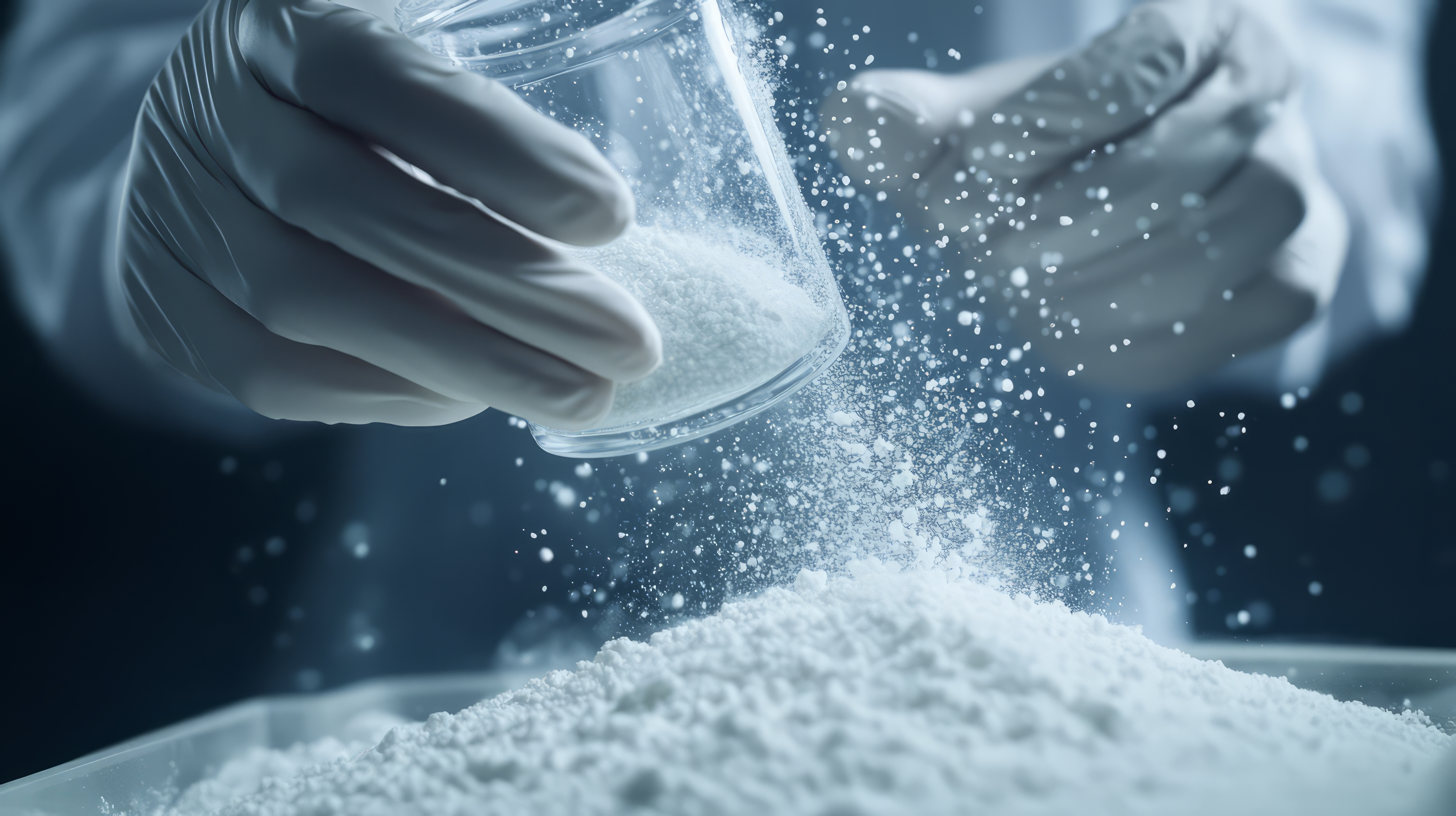
Pollution in Chemical Industries
Pollution in chemical industries is a complex and pressing issue,
given the sector'sextensive use of chemicals, materials, and energy in various
processes. The production and handling of chemicals can result in the release of
pollutants into the environment, including air and water.
Emissions may
contain hazardous substances, volatile organic compounds (VOCs), particulate matter,
and other pollutants that pose risks to human health and ecosystems. Contaminants
can also enter soil and groundwater, leading to long-term environmental
consequences.
To address these challenges, the chemical industry has been
adopting increasingly stringent environmental standards, pollution control
technologies like a chemical filter, and sustainable practices. Efforts are underway
to reduce emissions, minimize waste, and develop safer alternatives to harmful
substances, all with the aim of safeguarding the environment and public health while
continuing to meet the world's chemical demands.
The need for better technology
The chemical industry, in its pursuit of sustainability and
responsible manufacturing, recognizes the vital need for better technology and
innovative solutions. With increasing environmental awareness and stricter
regulations, there's a growing imperative to minimize the environmental impact of
chemical processes.
Advanced technology plays a crucial role in achieving
this goal. Whether it's enhancing process efficiency, reducing emissions through
chemical filter, or developing cleaner and safer production methods, the chemical
industry continually seeks cutting-edge technologies. Improved monitoring systems,
green chemistry practices, and sustainable materials are just a few examples of
areas where technological innovation is making a difference.
By embracing
these advancements, the chemical industry not only ensures its continued growth and
competitiveness but also contributes to a cleaner, safer, and more sustainable
future for both industry and the environment.
Solutions for Chemical Industries
MasturlalFabrichem is in the chemical, odor and particle control
filtration processes and produces the most efficient and powerful air cleaners for
industrial and commercial use.
Known for powerful multistage filtration
systems with different types of filtration bags, the largest chemical-adsorbent
surfaces, custom carbon blends, advanced HEPA particle filters and UV technology,
our air cleaners can tackle virtually any indoor and outdoor air quality concerns at
the workplace.
The high-performance industrial air cleaners provide
versatile and effective solutions for hundreds of airborne chemicals and odors,
including disinfectants, diesel fumes, welding fumes, industrial wastes, medicinal
odors, ozone, smoke and many more.
Chemical purification has even more
advantages. Masturlal Fabrichem has created a wider range of filtration bags each of
which reacts to a specific pollutant. Equipment can also be made to order to
maximize efficiency.
Its air cleaning systems and industrial air filters can
be found in office buildings, foundries, power plants and many other facilities in a
wide variety of industries. The efficiency and safety of the chemical filtration
system used is ideal for extreme circumstances and you will find products in
cleanrooms, hospitals and even museums.
Food Processing
The food processing industry is a dynamic and essential sector that transforms raw agricultural
materials into a wide range of consumable products. From fresh produce to packaged snacks, this
industry plays a pivotal role in supplying the diverse and ever-changing food preferences of
consumers worldwide.
As global demand for processed foods continues to rise, the food
processing industry is faced with the dual challenge of meeting consumer expectations for
convenience and quality while adhering to strict standards for hygiene, nutrition, and
sustainability.
In recent years there has been a notable shift towards more natural and
healthier food options, reflecting changing consumer preferences and regulatory measures. The
food processing industry, at the intersection of agriculture, technology, and culinary
innovation, is continuously evolving to deliver products that are not only delicious and
convenient but also safe and environmentally responsible.

Pollution in Food Processing Industry
Pollution in the food processing industry is a multifaceted
challenge influenced by the diversity of products and processes involved. The sector
handles an extensive range of products, from grains and sugar to dairy, cocoa,
spices, and more. Each of these products presents unique challenges in terms of
contamination, sanitary regulations, and food handling standards.
Cross-contamination is a primary concern, as it can compromise the safety and
quality of food products. Stringent sanitary and food handling regulations are in
place to ensure that food processing facilities maintain the highest standards of
cleanliness and hygiene. Environmental pollution can occur in various forms,
including the discharge of wastewater containing organic matter and residues,
emissions from energy-intensive processes, and the production of non-recyclable
packaging materials.
As consumers increasingly demand more sustainable and
eco-friendly food options, the food processing industry is actively seeking ways to
minimize its environmental footprint through the adoption of cleaner and more
responsible production practices, as well as innovative technologies that reduce
waste, conserve resources, and enhance overall sustainability.
The need for better technology
The food processing industry, in its quest to meet the evolving
demands of consumers, faces a growing need for better technology and innovation.
Advancements in technology are instrumental in improving food safety, quality, and
efficiency throughout the production and distribution processes.
From more
precise monitoring and control systems to enhanced packaging solutions, technology
is central to reducing food waste, ensuring product traceability, and complying with
rigorous food safety regulations.
The integration of automation, data
analytics, and artificial intelligence into food processing operations is
transforming the industry, enhancing productivity and sustainability. Ultimately,
better technology is not just a means of keeping up with consumer preferences but
also a vital tool for addressing the complex challenges of food security, safety,
and sustainability in an increasingly interconnected and globalized world.
Solutions for Food Processing Industry
Masturlal Fabrichem has a wide variety of dust collectors that can
be applied in the food processing industry ranging from small bin vents to large
baghouses customized to meet the specific needs for each type of food product.
Dust collectors or ‘material separators’ in the food industry keep the
product in the process stream through use of a bin vent collector, preventing the
loss of valuable ingredients and removing a potential waste stream. Food processing
applications produce dusts on both the upstream and downstream sides of the process.
Upstream nuisance, pre-process, and out-of-plant sources can require dust
collection. While downstream the production processes, and other internal process
plant sources drive the need for dust collectors. The types of processes found in
the food industry may include:•
Mixing
Conveying
Screening
Packaging
Drying
Blending
Extruding
Weighing Airborne particulate pollution in food processing environments can obstruct
air supply systems, causing contamination at critical points. Air filters are
essential to protect high-care food products by ensuring air quality remains free of
contaminants. The primary goal of air filtration and related engineering services is
to prevent airborne particulates from compromising food safety and product
integrity.
Textile
The textile industry, a cornerstone of the global economy, encompasses the production of fibers,
fabrics, and clothing. From traditional handcrafted textiles to modern automated processes, this
industry has evolved significantly over time. It not only plays a vital role in fashion and
apparel but also provides materials for various sectors, including home furnishings, industrial
applications, and technical textiles.
However, the textile industry faces significant
challenges related to environmental sustainability, including water and energy consumption,
chemical usage, and waste generation. In response to these concerns, there is a growing emphasis
on eco-friendly and sustainable practices, including the use of recycled materials,
eco-conscious dyeing processes, and innovations in waste reduction.
This industry
future lies in embracing technology, sustainability, and innovation to meet consumer demands for
responsible and ethically produced textiles.

Pollution in Textile Industry
The textile industry grapples with significant pollution
challenges, particularly in the realm of exhaust air purification. A prime concern
arises from processes involving stenter frames, which emit waste air laden with
pungent odors, wax, oil, and fiber particles.
Unsuitable filters can rapidly
become clogged, resulting in substantial costs for filter replacement and disposal.
Additionally, the release of blue smoke, while contributing less to volatile organic
compound (VOC) pollution, is a pressing issue due to its adverse impact on nearby
communities, often triggering neighborhood complaints. Managing and effectively
separating these pollutants is a critical aspect of reducing the textile industry's
environmental footprint.
The need for better technology
With the advancement in fabric and its production there is a need
for improvement is technology in the textile industry.
The industry is ever
evolving and requires innovations that help in the progress of the area while taking
into account the environmental impact the activities cause.
Paper
The paper industry plays a significant role in both communication and packaging, influencing
various aspects of daily life. However, the paper industry faces mounting challenges related to
environmental sustainability and resource management.
Issues such as deforestation,
water consumption, and chemical usage have sparked a growing emphasis on sustainable practices,
including responsible sourcing of raw materials, energy-efficient production processes, and
waste reduction.
As the industry evolves, technological advancements and innovative
recycling efforts are vital for minimizing its ecological footprint and ensuring a more
sustainable future for the paper sector.

Pollution in Paper Industry
The paper industry, while playing a pivotal role in daily life, is
faced with significant pollution challenges throughout its production processes.
Paper mills are prolific consumers of energy, water, and wood pulp, involving
intricate operations controlled by advanced technology.
These processes
generate substantial dust emissions, posing environmental concerns. Additionally,
the chemical treatment of raw materials during paper production yields corrosive
gases that can harm surrounding machinery and equipment, especially sensitive areas
like control rooms and electronic components.
These contaminant gases, with
their corrosive effects on copper and silver components, result in a loss of process
efficiency, increased maintenance costs, expensive repairs, and unplanned downtime.
Pollution control measures are crucial for mitigating these environmental and
operational issues in the paper industry.
The need for better technology
The paper industry, facing environmental and operational
challenges, has an increasing need for advanced technology solutions to enhance its
sustainability and efficiency. Better technology, like industrial air filtration
systems, can address issues such as reducing energy consumption, water usage, and
emissions, as well as improving the recycling and waste management processes.
Innovations in paper manufacturing, including cleaner and more energy-efficient
production methods, are vital for minimizing the industry's ecological footprint.
Furthermore, the implementation of state-of-the-art monitoring and control systems
can optimize paper production, reduce downtime, and enhance quality control.
The development and adoption of advanced filtration and purification
technologies help mitigate pollution concerns, ensuring that the paper industry not
only meets regulatory standards but also contributes to a more sustainable and
environmentally responsible future.
Solutions for Paper Industry
MasturlalFabrichem provides a variety of filter cartridges,
pleated bags and flat cellpanel filters suitable for the paper industry and the type
of dust, itgenerates. They develop customized solutions specifically for the needs
of thepaper industry. These ensure effective and efficient gas-phase filtration
topermanently remove contaminant corrosive gases from the air. We offereverything
from a single source: from on-site pollutant analysis to theselection of filter
media and filter units or permanent ongoing monitoring.
We providereliable
protection against corrosion by contaminant gases that are releasedduring the main
process steps in papermaking:
Lignin removal
Bleaching
Wastewater treatment



